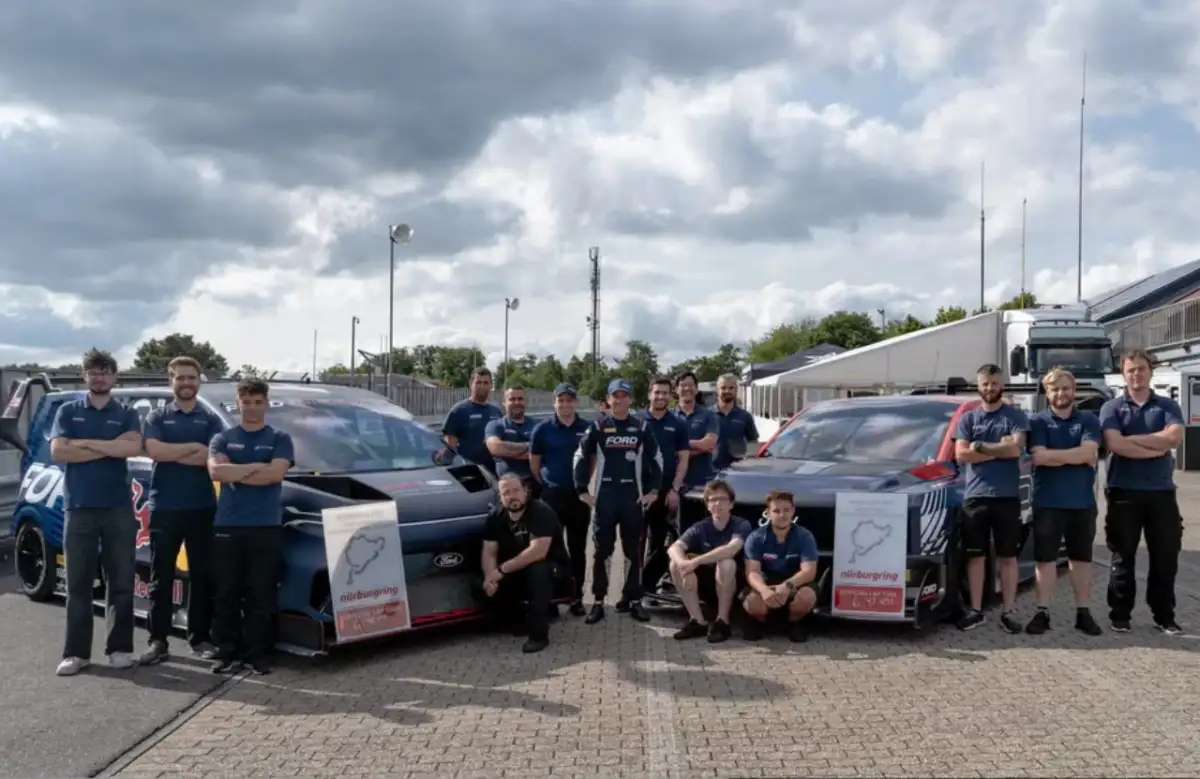- The Surprising Origin: Beyond the Ordinary
- Secrets of the Engineering Breakthrough
- Reasons Why the Van Outpaced the Muscle Icon
- Mustang GTD vs SuperVan 4.2
- Expanded Engineering and Team Effort
- “The Van That Ignited Legends”
When talking about Ford performance on legendary tracks like Nürburgring, the conversation usually starts and ends with the Mustang—a muscle car that’s embodied American speed, power, and noisy track dominance since the 1960s. Yet Ford has just flipped the script on tradition: their prototype electric van, the SuperVan 4.2, not only outpaced the Mustang GTD, but is now the fastest Ford ever to lap the “Green Hell.” This isn’t just a fun fact—it’s engineering audacity, pushing the limits of what a utility vehicle can do, and rewriting the meaning of speed for the Blue Oval.

The Surprising Origin: Beyond the Ordinary
In the 1970s, Ford’s first “SuperVan” appeared as a wild experiment in engineering, proving that vans weren’t just for hauling cargo.
In 2025, Ford Performance stunned the racing world when its all-electric SuperVan 4.2, packing nearly 2,000 horsepower and an advanced all-wheel-drive system, beat the time set by the road-legal Mustang GTD at Nürburgring—posting an incredible 6:48 lap compared to the Mustang GTD’s 6:52.
This van isn’t a regular delivery vehicle. Inspired by Formula 1, it’s the product of years of experimentation—first with lightweight builds, then with massive engines, and now ultra-high-output batteries and electric motors, piloted by top drivers like Romain Dumas.
Secrets of the Engineering Breakthrough
The van has been stripped of all unnecessary weight inside, and its chassis reinforced to near racecar standards.
Suspension is custom-built to counteract the tall body’s center of gravity and maintain tire contact under extreme lateral loads.
The triple-motor electric system provides seamless torque distribution, with a battery pack optimized for both power and weight.
Advanced cooling keeps the electric powertrain at peak performance across long laps, just like top-tier racing machines.
Formula 1–derived aerodynamics—including huge spoilers, diffusers, and active elements—help produce stability and cornering never seen in a commercial vehicle.

Reasons Why the Van Outpaced the Muscle Icon
Instant torque: Electric motors deliver maximum torque from zero rpm, whereas Mustangs need revs to reach peak output.
Traction control: The SuperVan’s sophisticated all-wheel-drive system eliminates wheelspin, even with supercar-level power.
Lightweight materials: Carbon fiber, aluminum, and lightweight composites offset the battery’s mass.
Slick racing tires and ceramic brakes: Built for speed, these components handle the SuperVan’s weight and force, allowing track-worthy braking and cornering.
Purpose-built electronics: In-cabin controls allow the driver to adjust torque maps, downforce, and other parameters for each section of the track.

Mustang GTD vs SuperVan 4.2
Expanded Engineering and Team Effort
Ford’s performance engineering team brought in aerodynamicists, battery experts, and racing drivers to maximize the van’s potential on every corner and straight.
The project’s roots include wild one-off vehicles, but SuperVan 4.2 is the culmination of decades of “what if” thinking, powered by the latest software and hardware from Ford’s racing programs.
The record-shattering lap is more than a stunt: it’s proof of concept for commercial EV platforms, and a challenge to every competitor focusing solely on sports coupes.
“The Van That Ignited Legends”
Long ago, racers laughed at the thought of a van on the track. But with each innovation, Ford’s engineers refined their idea until, one day, the big utility vehicle overtook sports cars on the world’s toughest circuit. The crowd fell silent, then cheered—proof that imagination and ambition can drive any machine beyond limits.



